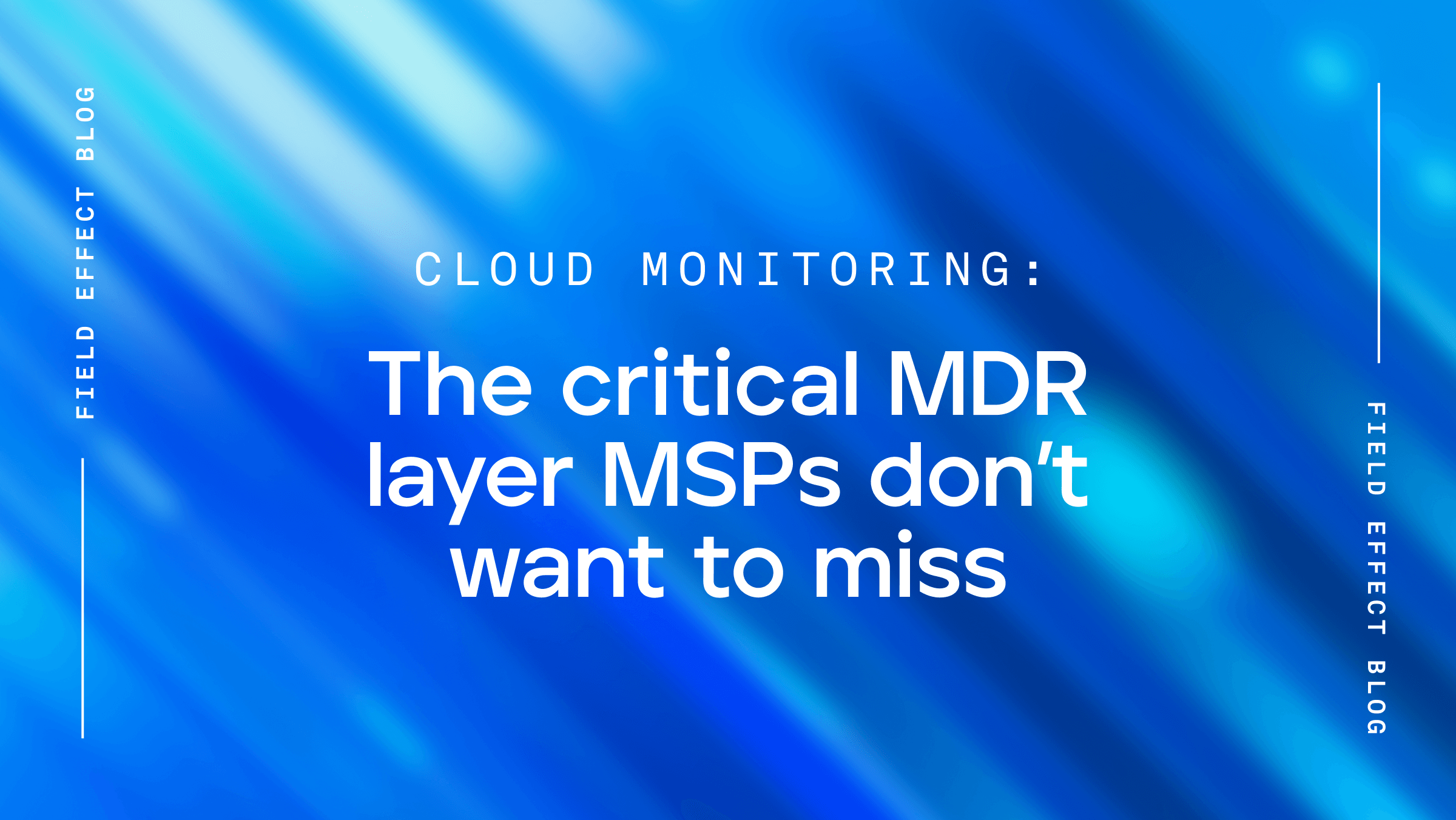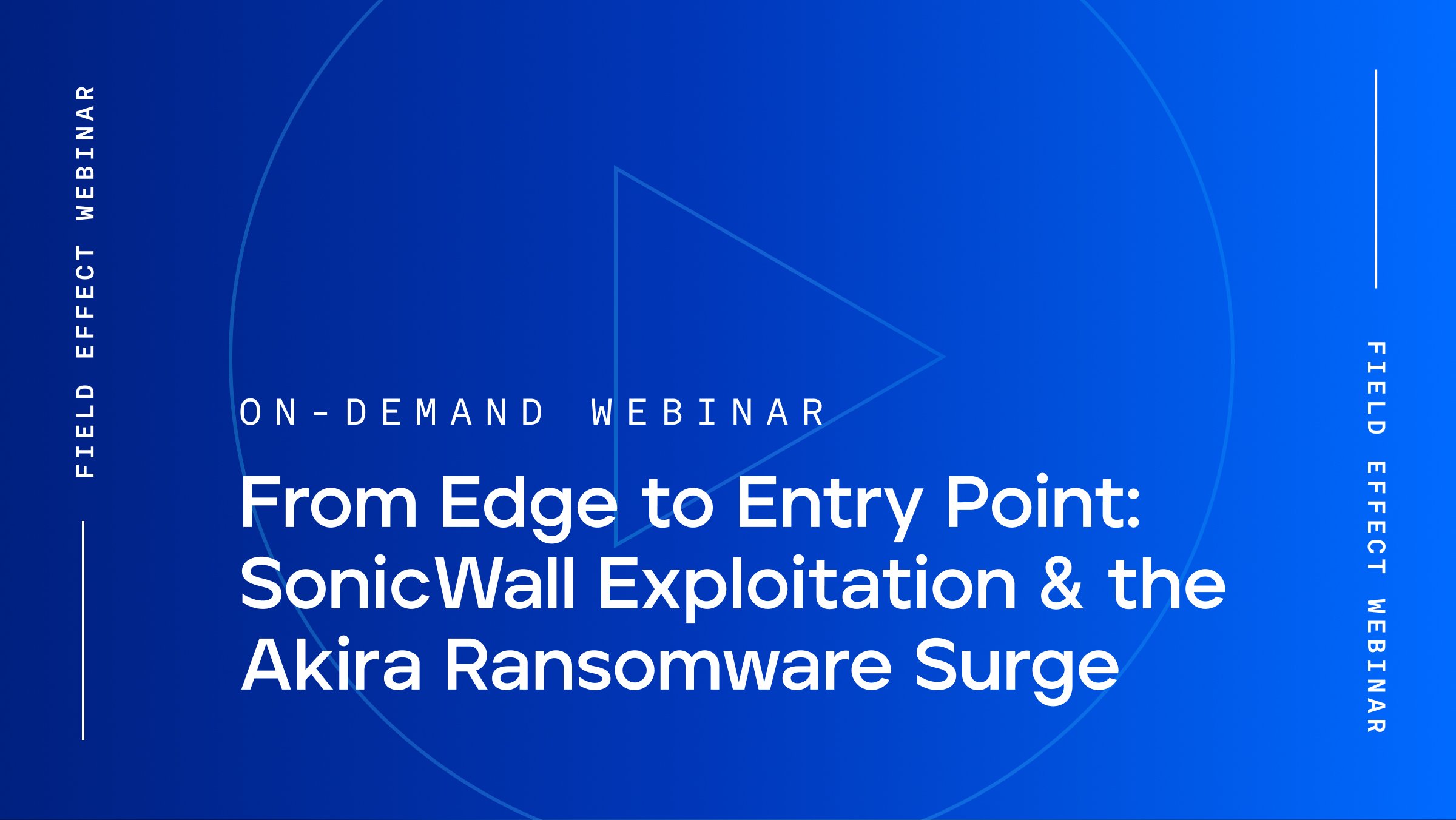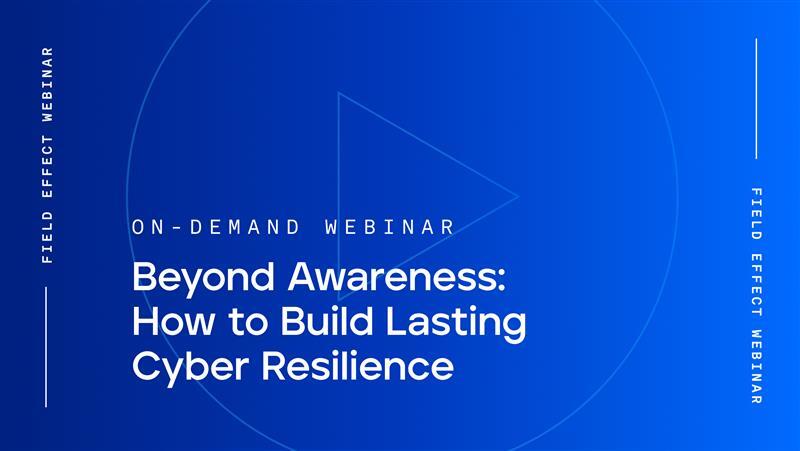
Blog Post
September 21, 2023 | Cybersecurity education
By Field Effect
Reports suggest that as much as 74% of data breaches involve some form of privilege abuse, where a threat actor gains access to an account with elevated privileges and uses it to gain unauthorized access to systems and data.
One of the best ways to defend against this is to restrict each employee's access using the principle of least privilege.
The principle of least privilege is the idea that every account on a network should be granted only the minimum system authorizations and resources necessary to perform its function.
An example of this in practice would be Role Based Access Control (RBAC). This is when an organization maps the required access to systems and resources based on the specific role of an employee. A single role may apply to a single individual but often applies to several.
The principle of least privilege plays a critical role in protecting companies. Here are five benefits your organization can expect from this strategy.
Every organization has an attack surface comprising all areas of your IT network where unauthorized users could exploit vulnerabilities to access critical systems or confidential data.
Implementing the principle of least privilege shrinks your company's attack surface by protecting privileged accounts, such as administrators and superusers.
Following the principle of least privilege helps to reduce the scope of a breach. For example, an account from the sales department should have access to only the resources needed by that person and have no type of administrator (or privileged) access. If this account is compromised, an attacker would be limited to the accesses and privileges of the sales team.
Dive into the past, present, and future of cyber security with The State of Cyber Security eBook.
If you don't practice the principle of least privilege—and everyone has access to everything—one account breach could compromise your entire infrastructure.
Embracing this concept can also reduce network downtime in the wake of a breach. When malware propagation is limited through restricted access, less of your network will be impacted during an incident. And, when the scope of the attack is smaller, it often takes less time to remediate.
Your company's data may be critical to what separates it from the competition. Embracing the principle of least privilege can help you keep your most important data protected from internal and external threats.
Since you restrict valuable and sensitive data to only those who need it to carry out their roles, the attacker is forced to target specific accounts, which tend to be better protected and more resistant to attack. When it comes to internal attacks, you limit the data that can be destroyed or taken by any single actor.
Giving employees access to a broad group of systems and resources can also create unnecessary internal risk. People make mistakes, and those can be greatly exacerbated if an employee has access to more data or privileges than needed.
Besides, workers who aren't familiar with specialized data groups or software may be more likely to inadvertently delete files, rearrange carefully arranged data, or make other mistakes that create extra work for your team.
There's no time like the present to bring the principle of least privilege to your company. Here are four steps to get you started.
The first step in implementing this strategy is understanding how privileges work at your company. That means auditing who has access to your business's resources, data, and software.
You can do that yourself if your company is small enough or you have the right security personnel on your team. But it can also be helpful to partner with an external organization specializing in this type of work to make sure you don't miss anything.
The goal of this audit is to find opportunities to limit privileges on existing accounts. You may be able to spot many of these opportunities on your own. However, you might also need to solicit feedback from leaders in different departments to get the complete picture.
Team leaders can also tell you which resources employees across your company need to do their jobs. You can create a master list of these resources so that you know which privileges to give to new accounts when you hire new workers or need to create them for other reasons. It's much better from a security perspective to add privileges later than to default to giving people more than they need right away.
If you're struggling to determine what the least privilege possible looks like, it can be helpful to dive into what employees from each department do regularly as part of their role in the company. Consider the resources these tasks require and give these users or groups account privileges for those only. This is the foundation of RBAC.
As you go through your audit and figure out what systems your employees need access to, you'll likely find that some needs are occasional. For example, a worker may need to access a particular data set once per quarter or fiscal year. In that scenario, temporary privileges can be very helpful.
With temporary privileges, you can give a team member access to resources when they need them without permanently increasing your attack surface. For the best results, the privileges should automatically revert after a certain amount of time so that no one has to remember to take them away.
Ongoing network monitoring is another important part of implementing the principle of least privilege. Your audits and conversations with team leaders can reveal a lot about which employees need to access which resources. But theory and practice don't always match up.
Mistakes can happen, and privilege creep is quite common in organizations.
For example, a user's role within the organization may change and require that they have access to new data or resources. Sometimes, these new privileges are added, but the old ones aren't removed. Additionally, usage habits can change over time, and monitoring helps you adjust privileges as they do.
Like other cybersecurity strategies, the principle of least privilege is just one arrow in your quiver, not a comprehensive solution. It's also important to invest resources toward detecting suspicious behavior, identifying malware, and creating alerts for account misuse.
The cornerstone of any great cybersecurity strategy is a holistic solution that monitors for, detects, and responds to vulnerabilities and cyberattacks. Our Covalence solution, managed by true cybersecurity experts, combines advanced analytics and technology to keep your business safe.
Schedule a free demo with us today to learn more about Covalence.


